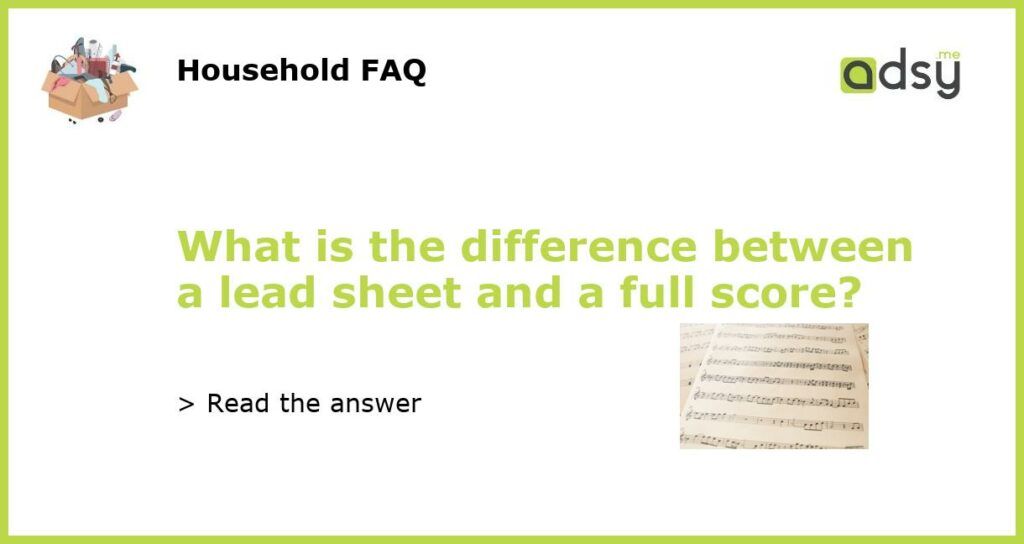The Basics: Lead Sheets and Full Scores
If you’re getting into the world of music notation, you’ve likely come across the terms “lead sheet” and “full score.” Both are used to convey musical ideas, whether you’re writing your own pieces or playing someone else’s. But what exactly is the difference between a lead sheet and a full score?
Lead Sheets: The Essentials
A lead sheet is a simplified version of a piece of music, containing only the most essential elements. Generally, lead sheets include the melody, lyrics, and chord symbols. These chord symbols are used to represent the harmony of the piece, allowing the performer to improvise their own accompaniment.
Lead sheets are common in jazz and popular music genres such as rock, pop, and folk. They provide a quick and easy way for musicians to learn and perform a piece without having to read through a full orchestral score.
Full Scores: The Complete Picture
A full score, on the other hand, contains all of the individual parts for every instrument in an ensemble. This includes the melody, harmonies, and rhythms for each instrument, as well as any markings for dynamics, tempo, and articulation. Full scores are used primarily in classical music and larger ensembles such as orchestras and wind bands.
Full scores give the conductor and performers a complete picture of the piece, allowing them to rehearse and perform together as a cohesive unit. They also show the interplay between different parts, highlighting how each instrument contributes to the overall sound.
Understanding the Differences
While both lead sheets and full scores are used to convey musical ideas, they serve different purposes. Lead sheets are a simplified version of a piece, designed to give performers a quick and easy way to learn the essentials. Full scores, on the other hand, are a complete picture of the piece, allowing performers to work together as a unified ensemble.
The choice between a lead sheet and a full score ultimately depends on the context. For solo performance or smaller ensembles, a lead sheet may be all that is necessary. For larger ensembles or classical music, a full score is essential for conveying the full picture of the piece and ensuring a cohesive performance.
Which is Right for You?
Whether you’re a performer or a composer, understanding the difference between lead sheets and full scores is essential. Knowing when to use each type of notation can help you create or perform the best possible version of a piece.
So which is right for you? That depends on your specific needs and context. If you’re looking for a quick and easy way to learn a piece, a lead sheet may be the way to go. If you’re working with a larger ensemble or looking for a complete picture of a piece, a full score is likely the better choice.






